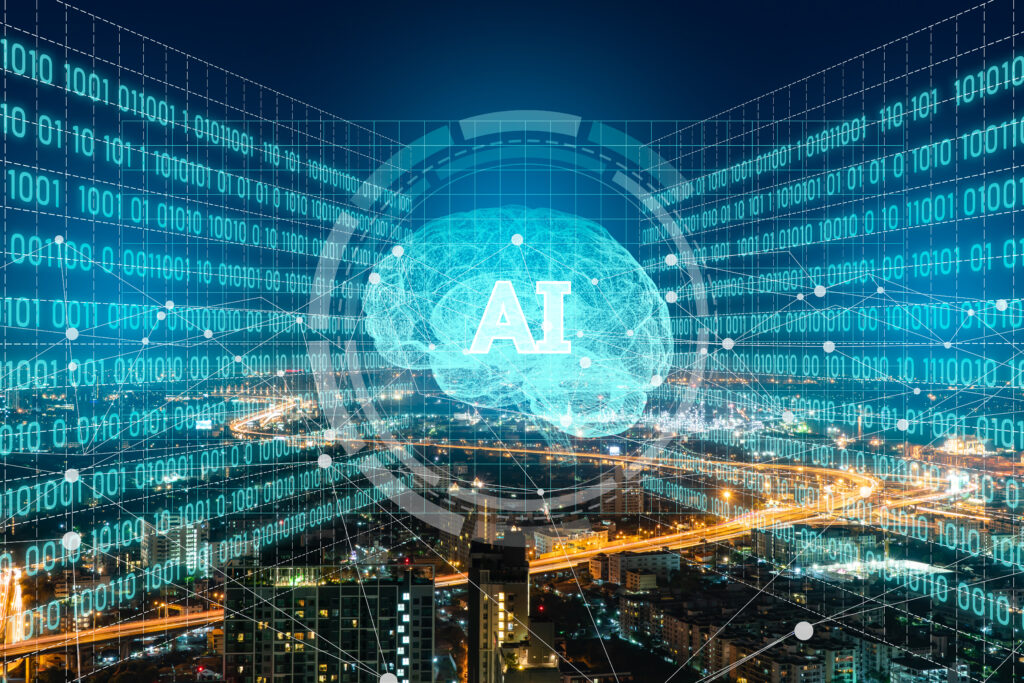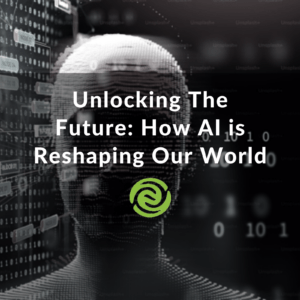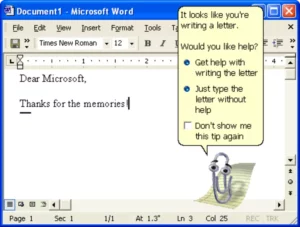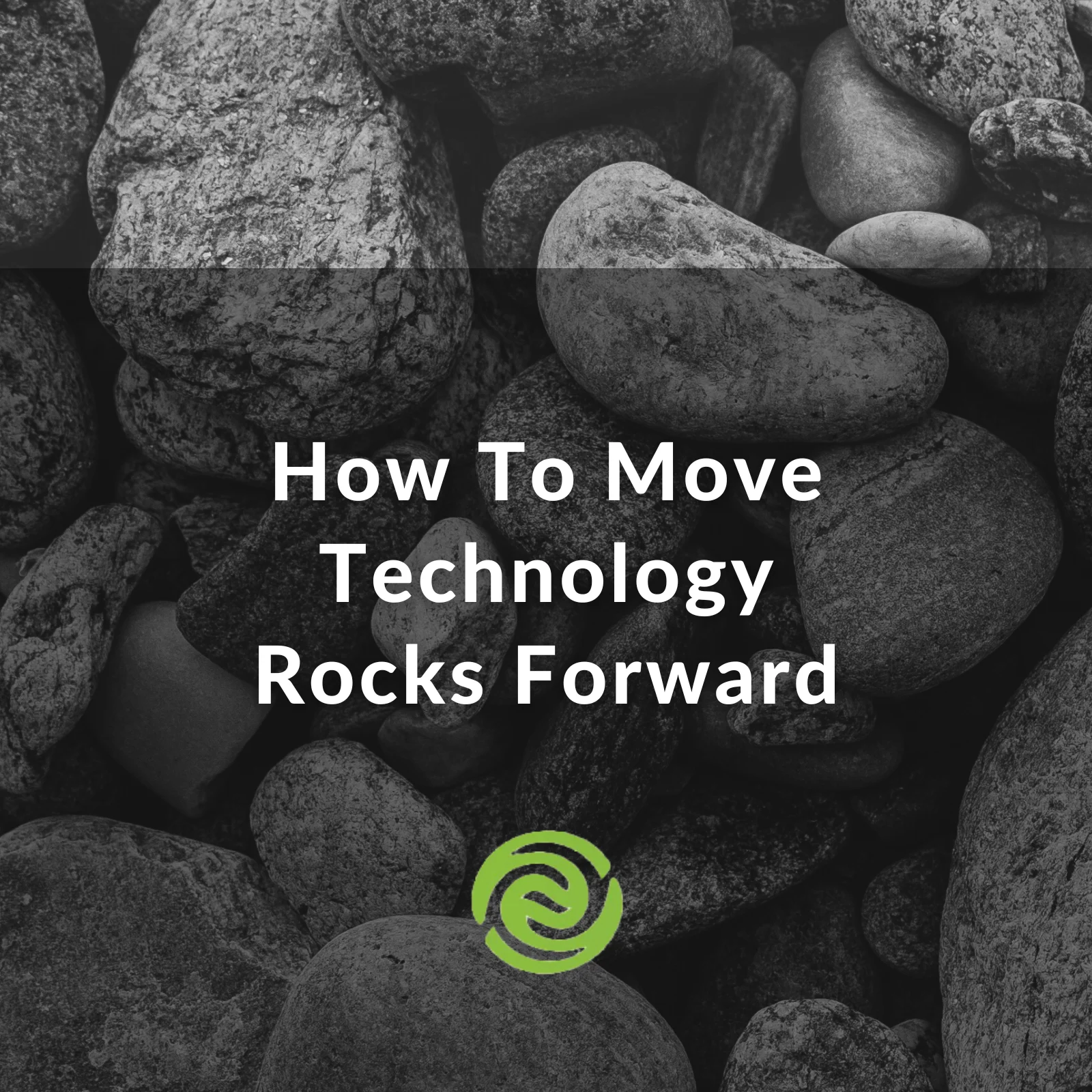A common pain point for many of our prospective clients is the persistent challenge of…
Unlocking the Future: How AI is Reshaping our World
Following up on our latest blogs on Web 3.0 and Blockchain, we continue our conversation about the power of technology with Artificial Intelligence (AI) and how it will affect us all.
What is AI?
Before we dive into AI, what exactly is AI and how did it come to be? According to Wikipedia, “The history of artificial intelligence (AI) began in antiquity, with myths, stories, and rumors of artificial beings endowed with intelligence or consciousness by master craftsmen. The seeds of modern AI were planted by philosophers who attempted to describe the process of human thinking as the mechanical manipulation of symbols. This work culminated in the invention of the programmable digital computer in the 1940s, a machine based on the abstract essence of mathematical reasoning. This device and the ideas behind it inspired a handful of scientists to begin seriously discussing the possibility of building an electronic brain.”
You might think of AI as robots, ChatGPT, self-driving cars, or ChatBots. Artificial Intelligence is best defined as a machine’s ability to perform a task that would otherwise require human intelligence and interaction. Remember the machine from Willy Wonka that he typed in to tell him where the golden ticket was? Well, there’s no golden ticket-finding machine here, just a lot of artificial intelligence needs to be placed in the hands of the right users.

History of AI
Artificial intelligence has long been known and used throughout history. You might be surprised to learn how far back AI goes. Over many decades, through the task of building many artificial electronic “brains” people have brought about the history of artificial intelligence. Here’s a quick overview below. You can look further into this timeline in Wikipedia’s article “Timeline of Artificial Intelligence”.
- 1951 The first working AI programs were written to run on the Ferranti Mark 1 machine of the University of Manchester:
- 1956 – The first demonstration of the Logic Theorist (LT) written by Allen Newell, J.C. Shaw and Herbert A. Simon (Carnegie Institute of Technology, now Carnegie Mellon University or CMU). This is often called the first AI program.
- 1961 James Slagle (PhD dissertation, MIT) wrote (in Lisp) the first symbolic integration program, SAINT, which solved calculus problems at the college freshman level.
- 1968 Science fiction starts to become science fact… the computer Hal is introduced on-screen in The Space Odyssey
- 1971 Terry Winograd’s Ph.D. thesis (MIT) demonstrated the ability of computers to understand English sentences in a restricted world of children’s blocks, in a coupling of his language understanding program, SHRDLU, with a robot arm that carried out instructions typed in English.
- 1979 The Stanford Cart, built by Hans Moravec, becomes the first computer-controlled, autonomous vehicle when it successfully traverses a chair-filled room and circumnavigates the Stanford AI Lab.
- 1985 The autonomous drawing program, AARON, created by Harold Cohen, is demonstrated at the AAAI National Conference
- Mid-1980s Neural Networks became widely used with the Backpropagation algorithm, also known as the reverse mode of automatic differentiation published by Seppo Linnainmaa in 1970 and applied to neural networks by Paul Werbos.
- Early 1990s TD-Gammon, a backgammon program written by Gerry Tesauro, demonstrates that reinforcement (learning) is powerful enough to create a championship-level game-playing program by competing favorably with world-class players.
- 1995 “No Hands Across America”: A semi-autonomous car drove coast-to-coast across the United States with computer-controlled steering for 2,797 miles (4,501 km) of the 2,849 miles (4,585 km).
- 1997 Let’s bring in some nostalgia for a moment. Remember the little paperclip that tapped on your screen to get your attention in Microsoft Word? “Clippy” was launched by Microsoft to help you and make suggestions while you plugged away at that critical proposal you had due the next morning. You guessed it, Clippy was AI.
- 2002 Roomba autonomously vacuums the floor while navigating and avoiding obstacles.
- 2005 Honda’s ASIMO robot, an artificially intelligent humanoid robot, is able to walk as fast as a human, delivering trays to customers in restaurant settings.
- 2011 IBM’s Watson computer defeated television game show Jeopardy! champions Rutter and Jennings.
- 2018 Announcement of Google Duplex, a service to allow an AI assistant to book appointments over the phone.
- 2020 OpenAI’s GPT-3, a state-of-the-art autoregressive language model that uses deep learning to produce a variety of computer codes, poetry and other language tasks exceptionally similar, and almost indistinguishable from those written by humans.
Looking back over this timeline, you can see how AI has consistently gained ground and developed over a very long period of time. In recent months however, AI has really stepped into the technology spotlight and has been making headlines all over the internet. Why? It’s the speed at which the new tools like Chat GPT and Bard have been developed and come to market, and the rapid adoption rate of these tools by users who are actively seeking them out to improve their work processes.
AI has emerged as a powerful tool that has the potential to transform many aspects of our lives. Besides being used in development, AI has made great strides in accessibility. Some of those accessibilities are assistive technologies, computer vision, adaptive learning, autonomous vehicles, social inclusion, virtual reality, and many others.
Advanced Tech in the Wrong Hands
Many of us are in the same boat right now asking, “How does AI impact my business?” It’s a viable question to ask, but could propose some risks if not handled correctly. AI can be both a useful tool but could also cause adverse situations in the hands of bad actors. Answering that question can help us navigate the use of AI in a resourceful, non threatening way.
Pros and Use Cases of AI
AI is great for brainstorming, and helping with writer’s block situations, but it dives much deeper than that. Copy.ai can generate high-converting marketing copy in seconds. Vidyo.ai, can instantly create short videos from longer ones for social media. These are just the start of what AI can do. Here are a few more…
Inspiration for People: When facing a daunting project, seeking inspiration is crucial. AI can act as a virtual muse, ready to assist at a moment’s notice. AI can provide an outline or creative framework to start projects. By analyzing vast amounts of data, AI can offer engaging perspectives, fueling both creativity and fresh ideas.
Speed to Information
In today’s fast-paced digital era, speed is of the essence. AI-powered tools provide instant access to a wealth of information. AI enables swift data retrieval when needed, gives rapid access to information, saves time, boosts efficiency, gets us past roadblocks, and empowers content creators to deliver high-value content in a fraction of the time.
Problem-Solving for Technical Folks: Not everyone possesses a technical background. AI can help bridge the knowledge gap. For those that are not tech-savvy, AI offers solutions to their technical challenges. From optimizing website performance to empowering users to solve technical problems with desired outcomes.
Content Development and Content Writers
Writer’s block and creative stagnation can be frustrating hurdles for content creators. AI becomes a valuable ally by providing much-needed assistance in content development. AI-based writing assistance offers real-time feedback, content prompts, outlines, and much more to spark new ideas.
Cons of the advancement of AI
But are we giving too much tribute to AI? As all things go in life… too much of a good thing is a bad thing.
We have to take a look at the cons and how AI can negatively affect us. Here are some of the adversities we could face… job displacement, ethical considerations, data privacy and security, copyright issues, misinformation, lack of human judgment and creativity, unemployment, skills gaps, and overreliance.
Regular Regulation?

What about regulation? Is it needed with AI? Reading the news article about Geoffrey Hinton, the ‘Godfather of AI’, quitting Google to warn about the dangers of AI (yes, you read that right, he quit Google and warns us in a CNN article and interview),
“Hinton’s pioneering work on neural networks shaped artificial intelligence systems powering many of today’s products. He worked part-time at Google for a decade on the tech giant’s AI development efforts, but he has since come to have concerns about the [AI] technology and his role in advancing it.”
This comes with the wave of attention that came when ChatGPT was launched. In his interview with Times, Hinton echoed concerns about AI’s ability to eliminate jobs and might create a world where people don’t know the truth anymore. He pointed out the overwhelming fact that AI has had a stunning advancement, which is far beyond what anyone anticipated.
So the Bottom Line… AI is not new, it’s here to stay, proceed with caution
 Where do we go from here? We already rely on AI apps, calendars, planning, copy and content writing, video, captions, e-commerce and so much more. We step forward knowing that we cannot create an atmosphere of fear of AI since it is here, and it is obviously here to stay. But we step forward with caution with clear boundaries between aid and help vs. taking it on to replace everything we do from day to day.
Where do we go from here? We already rely on AI apps, calendars, planning, copy and content writing, video, captions, e-commerce and so much more. We step forward knowing that we cannot create an atmosphere of fear of AI since it is here, and it is obviously here to stay. But we step forward with caution with clear boundaries between aid and help vs. taking it on to replace everything we do from day to day.
While AI offers immense benefits, its potential drawbacks cannot be overlooked. AI’s speed to information empowers us with instant access. However, we must remain aware of the potential risks and challenges associated with AI. Ultimately, AI is not a passing trend but a powerful, disruptive, and transformative tool that is here to stay. Let’s proceed with taking into account both the pros and cons of AI, and strive for a safer, more productive and knowledgeable future for us all.
Footnote:
https://www.cnn.com/2023/05/02/tech/hinton-tapper-wozniak-ai-fears/index.html
https://www.coe.int/en/web/artificial-intelligence/history-of-ai
https://en.wikipedia.org/wiki/Timeline_of_artificial_intelligence
https://www.artsy.net/article/artsy-editorial-life-death-microsoft-clippy-paper-clip-loved-hate
https://en.wikipedia.org/wiki/Timeline_of_artificial_intelligence
Photo Credit: https://www.artsy.net/article/artsy-editorial-life-death-microsoft-clippy-paper-clip-loved-hate









